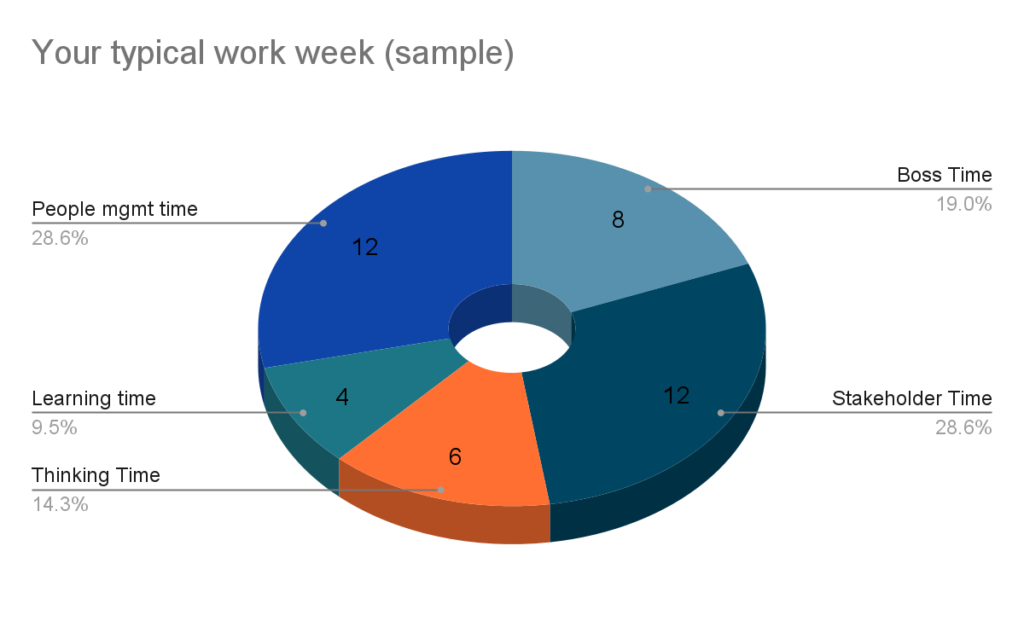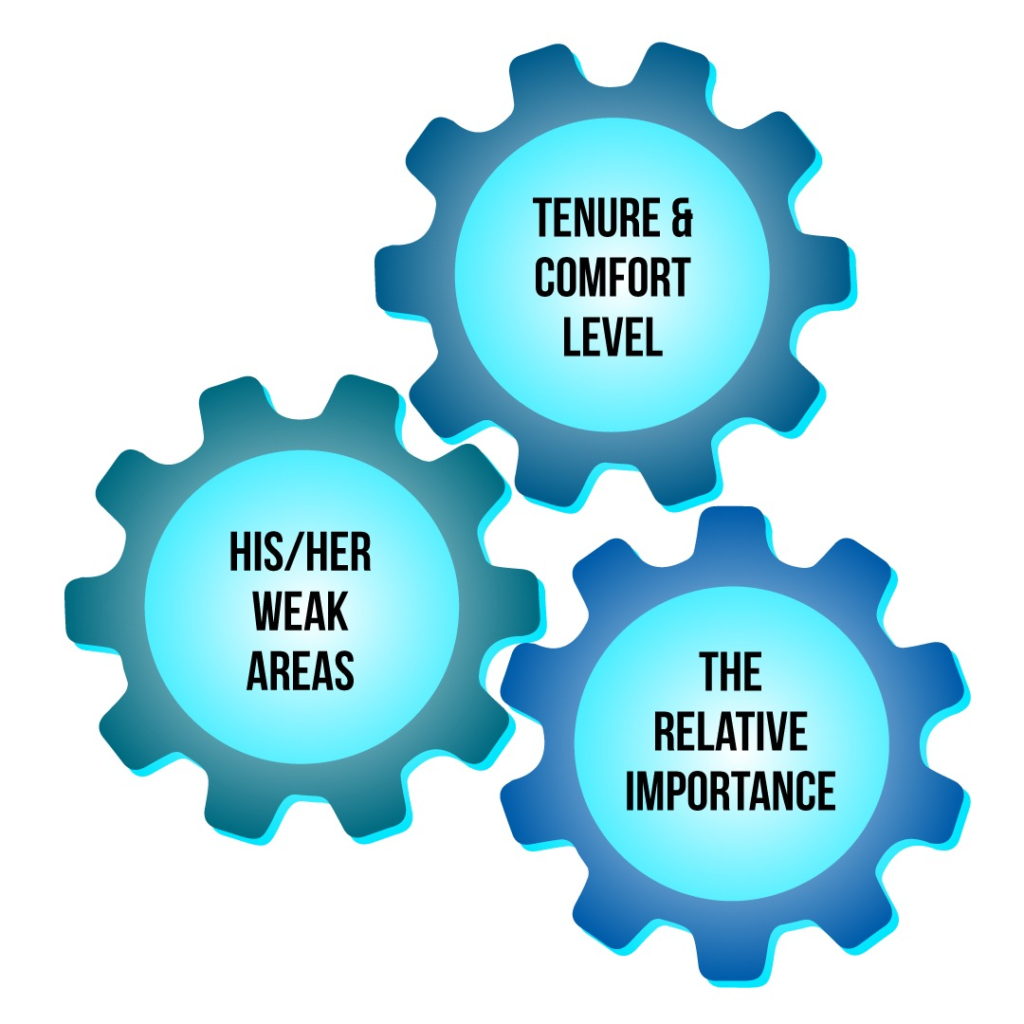Short answer: You can lead 3-5 Product managers/leaders before maxing yourself out
Using a 2-step process, here is how to calculate the exact number of PMs that you can realistically manage.
Step 1. Calculate the time expectations from your different responsibilities:
There are multiple expectations from a leader’s time. Below is the list to consider.

a) Boss time – Time your boss needs from you. These are regular updates, 1:1s, escalations, product discussions etc
b) Stakeholders time – Time you need to spend with your stakeholders – product discussions, regular catch-ups, updates, expertise sharing, escalations, etc.
c) Thinking time – Time you spend on problem-solving, customer insights, strategy, roadmaps, etc.
d) Learning time – Time you spend on learning about the customers, market, competition, industry, new technologies, etc.
e) IC Time – If you are working as an individual contributor (IC) in addition to a people manager, consider your IC time as well.
Any time left after meeting these expectations can technically be your people management time.
Word of caution: It is very likely you would realize that you do not have any time left if you give into every possible expectation above. Use your role definition (and get your boss to agree to the same) to timebox these activities and ensure you do justice to people responsibilities.
The next step is understanding how much people management time is required.
Step 2. Assess the current capabilities of your team:

If you already have a team, assess how much time you need to invest in each of the PMs. Use the following dimensions for the assessment.
a) Tenure & comfort level of the PM in his/her current role
b) His/her weak areas you need to fill in. For example, a PM might be a great problem solver but poor in stakeholder management. You need to spend time coaching him/her (and often fill in).
c) The relative importance of the PM’s area in your portfolio. The higher the importance, the more time you would have to invest there
Alternatively, if you are building a team – you can decide the skill levels (e.g. should I hire a seasoned or a need-to-be-trained PM?) based on the above assessment parameters, define the ideal team’s composition and make the optimal hiring choices.
Another important factor is your tenure leading people. Efficiency increases with experience however those gains are marginal beyond a point.
What tips would you give to a product leader who is trying to assess the size of his/her team?
